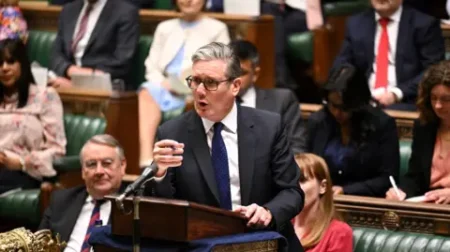The unfolding mayoral election in New York City has taken center stage with Democratic candidate Zohran Mamdani poised to potentially secure victory. The pivotal moment is set for Tuesday when the New York City Board of Elections will disclose the initial results of the ranked-choice voting conducted in the June 24 primary. The anticipation surrounding these results is not just about the numbers; they represent a significant shift in New York’s political landscape.
Zohran Mamdani, a 33-year-old state assemblyman who identifies as a democratic socialist, has emerged as a key figure in this election. On Election Night, he managed to capture 43.5% of the first-choice votes, placing him significantly ahead of his main competitor, former Governor Andrew Cuomo. The upcoming report by the Board of Elections is expected to shed light on how primary voters gauged Mamdani’s candidacy, especially following a week of discussion regarding his performance and its implications for not only the Democratic Party but the city as a whole.
Under the ranked-choice voting system employed by New York City, it is possible that no candidate will achieve a majority of first-choice votes. Should this occur, the outcome will then depend on how voters prioritized candidates on their ballots. This system emphasizes a more dynamic selection process whereby voters can express preferences beyond their top choice, ultimately leading to a more nuanced understanding of voter sentiment.
What is particularly striking is the strategic positioning of Mamdani’s campaign within the context of New York politics. His cross-endorsement with city Comptroller Brad Lander, the only other candidate to secure more than 10% of the votes, further solidifies his standing. Many candidates, including Cuomo himself, faced scrutiny and pressure from various quarters to forgo their votes for him altogether. In a decisive move suggesting he understood the gravity of the situation, Cuomo conceded on Election Night, even though he shall remain in the unofficial results to be released.
The Board of Elections is gearing up to release a comprehensive, albeit unofficial, overview of the ranked-choice tabulation. This overview will encompass all ballots processed and reveal a clearer picture of how each candidate fared. In this system, votes are counted in rounds, whereby the candidate with the least votes is eliminated, and the votes from that candidate are reallocated based on voters’ next preferences until only two candidates vie for the win. This unique approach in New York City voting may provide critical insights into voter prioritization.
As the election officials tally over 990,000 ballots initially reported, any additional ballots processed since then will also be included. However, a caveat remains—the results announced will not be final. The Board of Elections will continue to certify the election until July 15, meaning there’s still a small window for potential shifts in the rankings, particularly among the less favored candidates.
Despite these procedural uncertainties, the forecasts are leaning toward Mamdani’s favorable outcome. To achieve victory, he will need to be rated higher than Cuomo on a substantial proportion of the approximately 20% of voters who initially favored other candidates. Because of the anticipated “exhaustion” of some votes as lower-rated candidates are eliminated, Mamdani’s percentage in the final tally is likely to rise.
In theory, while there remains a slim chance for Cuomo to triumph, actualizing that scenario is contingent on how the undecided 20% split between the two. The ranked-choice system will provide unique insights into how voters from lower-ranking candidates feel about their potential nominee. A significant number ranking Mamdani ahead of Cuomo could indicate a flourishing coalition beyond his immediate supporters. Conversely, if a substantial segment displays more inclination towards Cuomo or leaves their ballots blank, it may suggest a broader uncertainty regarding Mamdani’s candidacy.
In summary, this election cycle not only reflects the dynamics of New York City’s electorate but also embodies a larger national dialogue around progressive candidates and the power structures that often hinder their ascension. As the results unfold, they will undoubtedly shape the narrative surrounding both the Democratic Party and the future governance of New York City.











